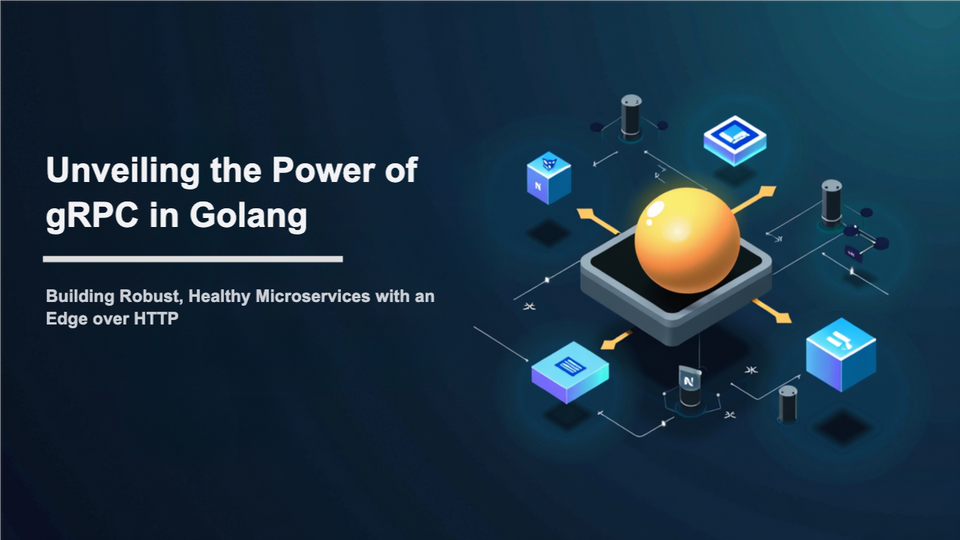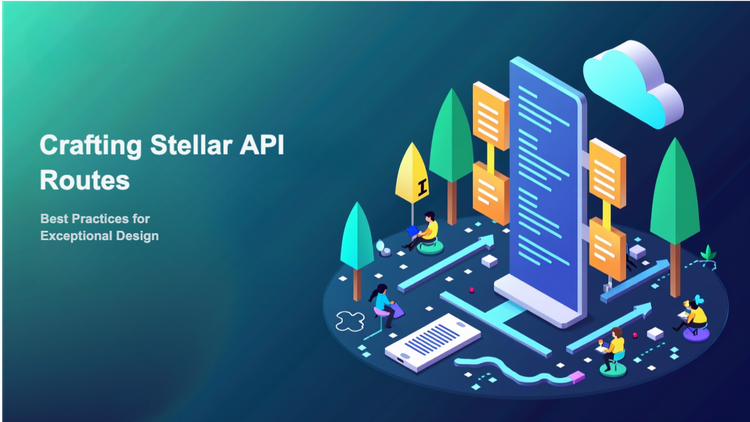Unveiling the Power of gRPC in Golang: Building Robust, Healthy Microservices with an Edge over HTTP

gRPC has quickly become the preferred choice for developing modern, microservice-based architectures. Unlike traditional HTTP, gRPC offers numerous benefits that make it a standout framework in terms of efficiency and concurrency, especially when used alongside Golang. However, gRPC does more than just remote procedure calls – it also includes built-in health checking mechanisms that are essential for maintaining service availability and resilience.
gRPC in Golang: A Perfect Synergy
Golang's concurrency and performance capabilities are a great match for gRPC's strengths. With its lightweight syntax and efficient data handling, gRPC is the ideal choice for developing high-performance microservices. The generated Go code seamlessly integrates with existing Golang libraries and frameworks, making it even more convenient to use.
gRPC vs. HTTP: Why gRPC Takes the Lead
Although HTTP has been widely used for web services, it's worth noting that gRPC comes with numerous advantages.:
- Performance: gRPC is designed to optimize data transfer and resource utilization by using efficient binary encoding. It avoids unnecessary headers, which makes it much faster than HTTP's text-based format.
- Scalability: With its streaming capabilities, gRPC is the perfect choice for efficiently managing real-time data in high-volume workloads and streaming applications.
- Interoperability: gRPC is a versatile tool that supports multiple languages and platforms. This allows for smooth communication and collaboration between different microservices, regardless of their diversity.
- Error Handling: gRPC goes above and beyond when it comes to error handling. Unlike HTTP's limited error codes, gRPC provides dedicated mechanisms that give you more control and allow for better debugging.
Beyond RPC: gRPC Health Checking - Your Service's Guardian Angel
gRPC offers more than just remote procedure calls. It includes a standardized health checking API (health/v1) that allows services to advertise their availability and readiness. With this, clients can dynamically find healthy services and avoid interacting with unhealthy ones, promoting service resilience and preventing potential failures.
Implementing Health Checking in Your gRPC Service:
- Dependency Injection: Ensure that you inject the health. Server interface into the dependencies of your service.
- Register Health Checks: You should implement methods for the health. Server interface to ensure your service's health. By doing so, you can return a health. HealthCheckResponse that accurately reflects the status of your service's health.
- Serve the Health Check API: To ensure the proper functioning of your main service, start a gRPC server for the health/v1 service in parallel. This will ensure that both services are up and running smoothly.
Health Check Strategies
- Simple Liveness Check: Make sure to verify that the service is currently running and capable of accepting connections.
- Readiness Check: Make sure to conduct thorough internal checks to ensure that the service is fully prepared and capable of handling requests. This may include validating database connections, confirming resource availability, and so on. It's crucial to verify everything is in place before serving any requests.
- Custom Checks: Make sure to implement custom checks that cater to the specific needs of your services. This will help ensure that your services meet the required standards and are tailored specifically to your customers' requirements.
Benefits of gRPC Health Checking
- Increased Service Resilience: Clients must utilize the power of dynamic service discovery to effectively find healthy services and avoid any failures caused by unhealthy endpoints.
- Improved Load Balancing: Load balancers have the ability to use health information in order to effectively distribute traffic among services that are in good condition.
- Enhanced Monitoring and Debugging: Health checks are crucial for gaining valuable insights into service availability and identifying any potential issues that may arise.
Beyond the Basics: Advanced Health Checking Techniques
- Health Check Aggregation: Combine all health checks into one response for a thorough analysis of the service's overall health. This will provide a comprehensive assessment of the service and its performance.
- Health Check Triggers: Make sure to configure health checks in a way that triggers actions such as restarting services or sending notifications. This will help you proactively address any issues and maintain the smooth functioning of your system.
- Health Check Deadline: To prevent client requests from being blocked, it is crucial to establish timeouts for health checks. This ensures that the system can quickly determine if a service is available or not and allows for prompt handling of client requests.
Conclusion
With gRPC in Golang, you have the power to develop strong and scalable microservices that outperform traditional HTTP. By incorporating gRPC health checking, you can ensure high service resilience, efficient load balancing, and valuable insights into service health. Embrace the capabilities of gRPC and health checking to create trustworthy microservices that excel in today's ever-changing landscape of distributed systems.




